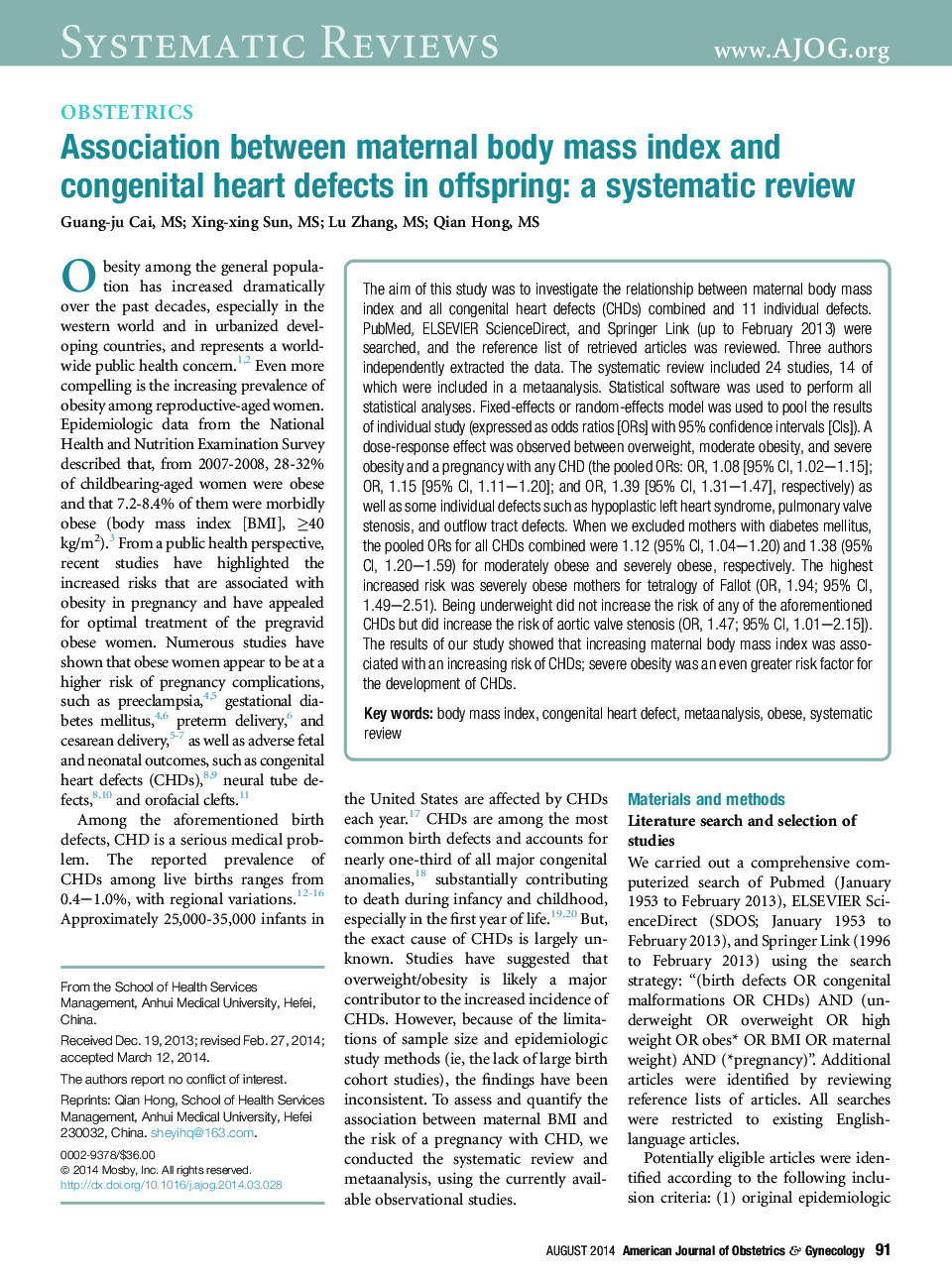| کد مقاله | کد نشریه | سال انتشار | مقاله انگلیسی | نسخه تمام متن |
|---|---|---|---|---|
| 3432955 | 1594916 | 2014 | 27 صفحه PDF | دانلود رایگان |
The aim of this study was to investigate the relationship between maternal body mass index and all congenital heart defects (CHDs) combined and 11 individual defects. PubMed, ELSEVIER ScienceDirect, and Springer Link (up to February 2013) were searched, and the reference list of retrieved articles was reviewed. Three authors independently extracted the data. The systematic review included 24 studies, 14 of which were included in a metaanalysis. Statistical software was used to perform all statistical analyses. Fixed-effects or random-effects model was used to pool the results of individual study (expressed as odds ratios [ORs] with 95% confidence intervals [CIs]). A dose-response effect was observed between overweight, moderate obesity, and severe obesity and a pregnancy with any CHD (the pooled ORs: OR, 1.08 [95% CI, 1.02–1.15]; OR, 1.15 [95% CI, 1.11–1.20]; and OR, 1.39 [95% CI, 1.31–1.47], respectively) as well as some individual defects such as hypoplastic left heart syndrome, pulmonary valve stenosis, and outflow tract defects. When we excluded mothers with diabetes mellitus, the pooled ORs for all CHDs combined were 1.12 (95% CI, 1.04–1.20) and 1.38 (95% CI, 1.20–1.59) for moderately obese and severely obese, respectively. The highest increased risk was severely obese mothers for tetralogy of Fallot (OR, 1.94; 95% CI, 1.49–2.51). Being underweight did not increase the risk of any of the aforementioned CHDs but did increase the risk of aortic valve stenosis (OR, 1.47; 95% CI, 1.01–2.15]). The results of our study showed that increasing maternal body mass index was associated with an increasing risk of CHDs; severe obesity was an even greater risk factor for the development of CHDs.
Journal: American Journal of Obstetrics and Gynecology - Volume 211, Issue 2, August 2014, Pages 91–117
